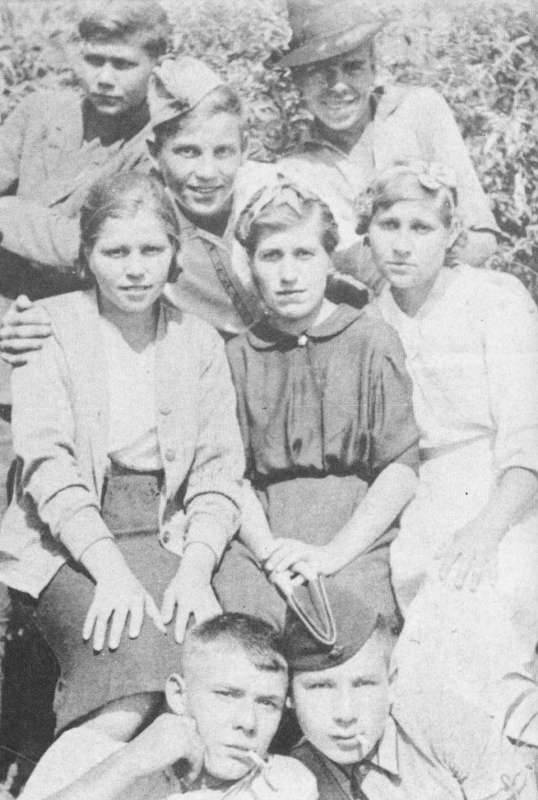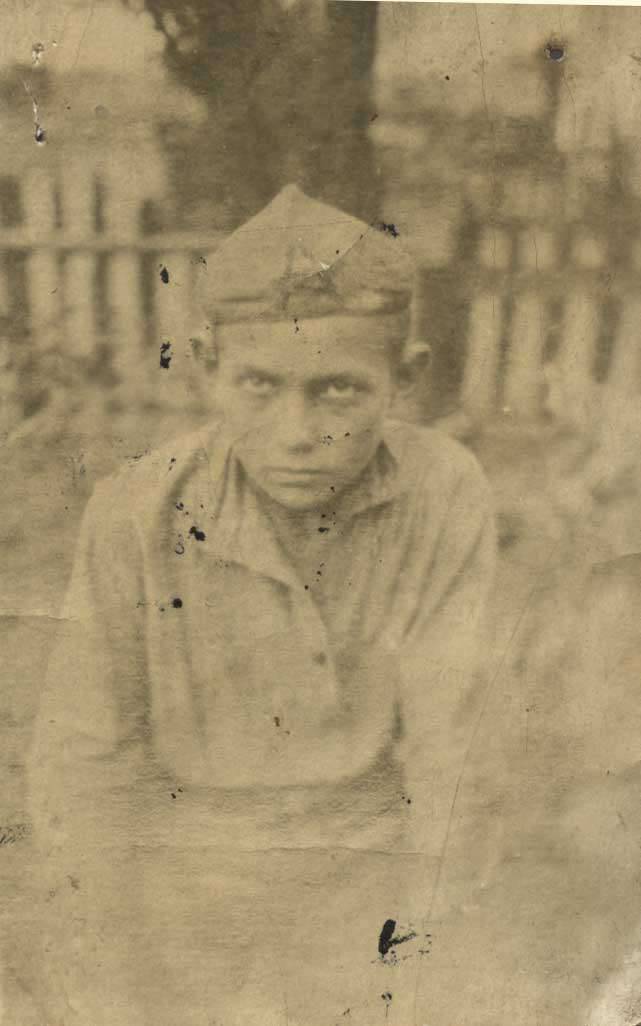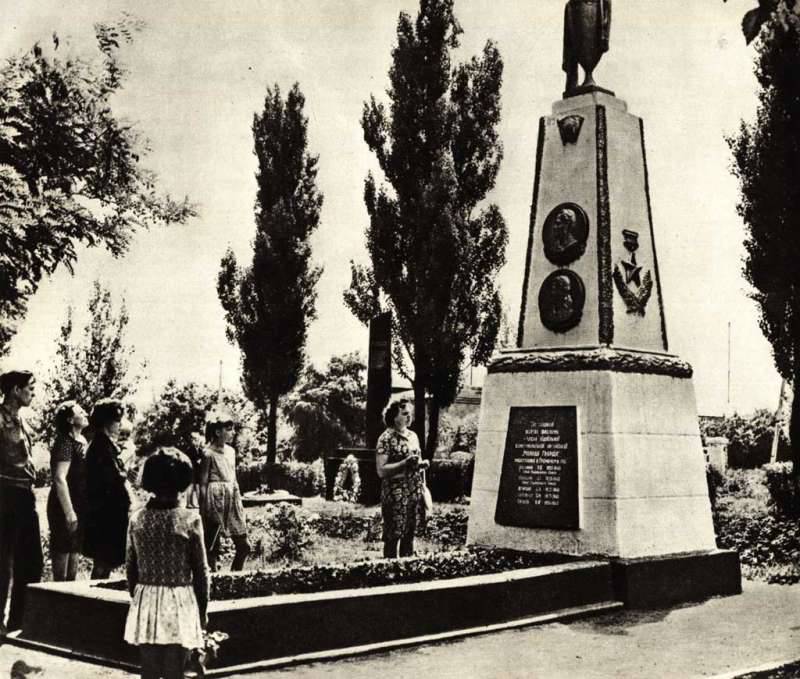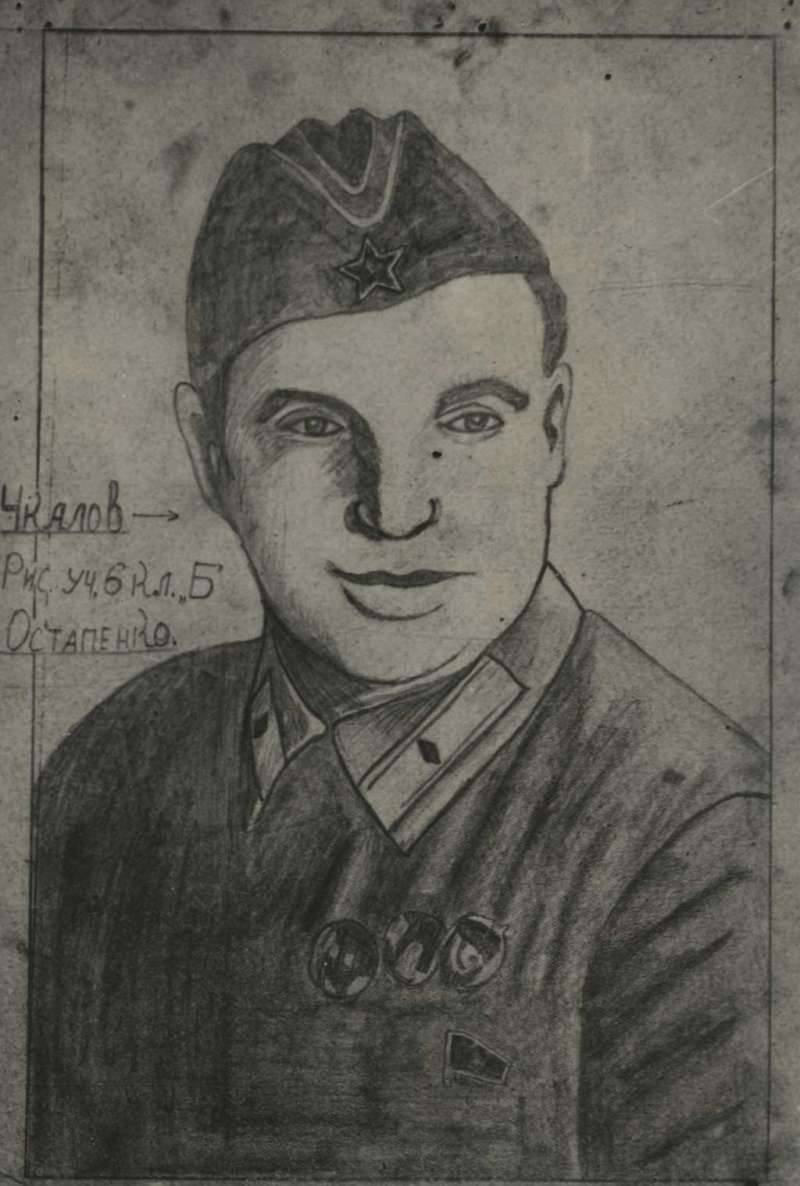Krasnodon's holy children died in February 1943
On the night of 8 on 9 in February, 1943 was shot more than three hundred people in the rattling forest in the Ukrainian town of Rovenky. Among them were Oleg Koshevoy, Lyuba Shevtsova, Simon Ostapenko, Victor Subbotin, Dmitry Ogurtsov. It seems to me that on this day it is necessary to get up and just one minute of silence to honor the memory.

And before that, mass arrests and execution had already taken place in Krasnodon. Total killed more than 100 people. According to other sources - 94 or 103 of a person, but nobody knows the exact number of killed innocent souls today.
Yes, I insist on it, on their holiness. They were 14-16 years. It was the backbone of the "Young Guard". These were innocent children who rose up to the extent they were able to deal with the hated invaders. It was during these February days, 73 a year ago, that mass executions were carried out in Krasnodon. The children were dumped alive in the hole of the mine No. XXUMX. Sergei Tyulenin could not be straightened: his crooked body hung on the beam. He was martyred. This is impossible to write, but necessary. I feel bad that the girls were tortured with particular cruelty: they stripped them naked and hung them by braids. No, I can not write.
It is better to let archival documents shed light on inhuman cruelty.
And the hate of the children then was a lot. And it began with the fact that several dozens of miners were buried alive in the central square in Krasnodon, who refused to work for the occupiers.
The distance from Krasnodon to the city of Rovenki is considerable: about 188 kilometers. His name came from the name of Khan, whose name was Revhenie. And he, in turn, received this nickname from the excessive enthusiasm for the treatment with grass with the strange name of jealousy: tincture of it was a good remedy for wounds. The almighty Khan did not know that where rhubarb grows, black gold lurks beneath the layers of black earth, which began to be mined in about 1877 year. In the 20th century, the city of Rovenky became truly miner: in 1934, it was given the status of a city. It was a strange and terrible place. Century oaks - some have passed for 100 years - surrounded on all sides by the city, cut it in half. And the visible mines complemented this gloomy landscape.
In the winter of 1943, mass raids took place in this city and completely innocent people could get into the trap.
The tragedy that happened there is unlikely to happen again. Although who knows. The cultivation of hate continues. And more than one generation has been cultivated on this hatred. After all, young people were tortured, stars were slaughtered by it, former citizens of Soviet Ukraine who had gone over to the side of the Germans tore off the spit. Many people recall that it was the local policemen who committed atrocities and tormented young people with more fatigue. That even the Germans were amazed at this hatred.
According to eyewitnesses, the local police had no idea who they were actually shooting. When they began to interrogate them, it turned out that they were able to remember some people. Somehow they were different. The local policeman remembered Lyuba Shevtsov by a good figure and a beautiful face, which she did not turn away before being shot.
And then there was a long way for the relatives and friends of the victims, who rushed to look for their little ones when Soviet troops liberated Krasnodon and other Ukrainian cities and towns. Long days and hours people walked and looked for their loved ones. People passed each other information about the places of execution. And so, from one grave to another, mothers and daughters walked in their sorrowful way. Everyone hoped to see their relatives alive, but this hope disappeared when dead bodies, tortured by torture, were found in the ditch.
Dmitry Ogurtsov, Semyon Ostapenko and Subbotin Dmitry from Krasnodon were transferred to the Rovenkovsky district gendarmerie. Oleg Koshevoy, who, according to his mother's testimony, took the route Talovoye village - Dolzhanka - Bokovo-Anthracite, was sent there too.
The distance from Krasnodon to the Side-Anthracite (now the city of Anthracite under the authority of the LC) is approximately 80 kilometers. Having passed this way, Oleg went to his distant acquaintance grandfather Krupenyk, who agreed to receive a sixteen-year-old boy, and then told the local policeman about this.
Dmitry Ogurtsov, it seemed, fate twice led away from Krasnodon. After all, Dmitry was born in the Oryol region, in the Yurasovo farm. But his father, attracted by the miner's fame, decided to go in search of a better life in Krasnodon. And then again, after a few years, the family leaves for Sakhalin. But something prevents them from settling there, and they again return to Krasnodon. From here, Dmitry goes to the army, where he is trained in radio engineering and sent to the Novorossiysk front in the 144-th separate regiment of the 83-th naval brigade. In 1942, near the city of Temryuk, he was seriously wounded and captured. He escaped. Successful. He is trying to get to his, but the front is far and there is no strength to reach. Dmitry gets to Krasnodon and for three months hides with his sister. Neighbors give it, they write a denunciation to the police. Dmitry is forced to work in the mines.

Semyon drew very well: his parents retained talented drawings made with a simple pencil. But he directed his talent to make rubber fonts: it could be used in the manufacture of leaflets. Many of his paintings were then sent to an exhibition in Moscow, and they subsequently got lost.
The character of Victor Subbotin formed the dream of becoming a pilot: he was an excellent student, he was able to save his drowning friend, he was always collected and careful. So he remained in the memory of his teachers and parents. Victor was a native resident of the city of Krasnodon and was very hard going through the occupation. He was able to become part of the organization and participated in all the events held by their "five". He could not leave the city when the arrests began and the mother said that he should be with them. He was seized near the Lenin club at the end of January 1942, where he sang so well and pleasantly to the guitar, and the girls listened to his beautiful voice, dying in anticipation of uncharted happiness. But now it did not exist. The young, mighty, growing up life branch was killed in the bud: Victor's arms were twisted in the joints, his whole face was in terrible bruising.
Traitors
It all started with a small piece of paper that was addressed (notice!) Not to the police chief, but to the mine chief Zhukov.
Renovation application.
I found traces of the underground Komsomol organization and became its member. When I learned its leaders, I am writing you a statement. Please come to my apartment, and I will tell you everything in detail. My address: st. Chkalov, No. 12, move 1, the apartment of Vasily Grigorievich Gromov.
20.XII.42. Gennady Pocheptsov.
The commandant of the Vasily Dmitrievich Podtynny police station, Gennady Pocheptsov, his stepfather Vasily Gromov, M. Kuleshov, the police chief Vasily Solikovsky, the former Esaul M. Kuleshov, Fadeev Guria and many other traitors were found by NKVD many years later.
They found the underpinned sixteen years after the end of the war: he worked as an accountant on a collective farm in the Stalin Region. Another traitor, Cherenkov, was hiding in a distant geological party, in the Urals. It is said that when his boss came to arrest him, the Georgian was overwhelmed by the hypocrisy of his subordinate, Podtynny, who praised his chief's daughter for reading the book Young Guard well. The court of the Ukrainian SSR, which began over Xtyn 23 under the Xtym of February, sentenced him to death.
The city's burgomaster Statsenko was found in East Germany, where he worked as a humble forager. Statsenko George, the son of the Krasnodon burgomaster, was arrested earlier.
And in Karaganda, Ivan Orlov, the former chief Krasnodar policeman, was hiding. In the camps for German prisoners of war, Colonel Ernst Emil Renatus, Otto Drewitz, E. Schroeder, J. Schultz, SS men, who were involved in the shooting of young men and women, were found. Note that German surnames are much smaller.
Feat Alexandra Peregonets
Honored Artist of the RSFSR Alexandra Feodorovna Peregonets in some ways repeated the feat of Lyuba Shevtsova, who became the actress of the local theater in the film.
Alexandra Feodorovna's husband, Dobkevich, was the director of the theater, a respected man, so on the third day at the German commandant's office he was offered to become a city mayor. He was not a party, but was a simple decent man and flatly refused. For refusal, he was shot. Then our Shura wanted to take revenge, throw gasoline over the theater and burn it. But the theater artist Baryshev (who had already established contact with the local underground) stopped her in time. They and several employees of the theater formed the underground group "Sokol".
With the approval of the authorities, reopening the theater, and then Madame Peregonets Salon for German officers, members of the underground got out drugs, distributed leaflets, collected information about the plans and deployment of German units in the Crimea, and then transferred all this to the partisans, thanks to which a large German was bombed out aerodrome.
When the forced dispatch of young people to work in Germany later began, Alexandra Peregonets, thanks to her artistic charm, received permission from the authorities to open a youth studio at the theater, where they accepted everyone, even without much talent. Thus, more than a hundred boys and girls were saved from slavery and death. But the main task of the underground group “Falcon” was to blow up the theater during the performance together with the fascist officers, generals and Hitler who gathered for the premiere (as is known from stories, in the Crimea, expected the arrival of the Führer). The artists, of course, understood that they would blow up with the theater, but they were ready for it. In the spring of 1944, our advancing units were approaching the Crimea. And then there was a tragedy. Two weeks before the liberation of Simferopol, the Sokol group was revealed by a traitor from the nationalist organization of the Gestapo. The participants of the Falcon were arrested immediately after the performance, without even letting them change their clothes. They were tortured for a long time by the Gestapo, and three days before our units entered Simferopol, on April 10, they were tortured and shot. Later, a monument was erected at the place of their burial, and at the entrance to the Drama Theater a memorial plaque with the names of the dead was fortified.
In 1981, the film "They were actors" was shot, dedicated to the feat of the artists of this theater. The main character, our aunt Shura, was played by a wonderful film actress Zinaida Kiriyenko. True, my grandfather always said that she was not at all like his aunt. Oh, he knew her well in life, was his favorite nephew, often ran to her at the theater in Moscow and St. Petersburg. In 1990, a study by Landau, the art historian Alexandra Peregonets, was published by the Art Publishing House in Moscow. The true story about the Sokol underground group was shown in May on 2010 in the television documentary The Shoot After the Premiere.
After the recent events in Ukraine, I was very worried that the memory of Shurochka would be lost to the Peregon, the street in Simferopol, named after her, would be renamed. But the story did not allow this to happen. Simferopol is now part of Russia!
... There is a monument in the Thunderbolt. There are such holy words there: “But even dead, we will live in a particle of your great happiness - after all, we have invested our lives in it”. But today a book about the Young Guard was removed from the school program.


Information